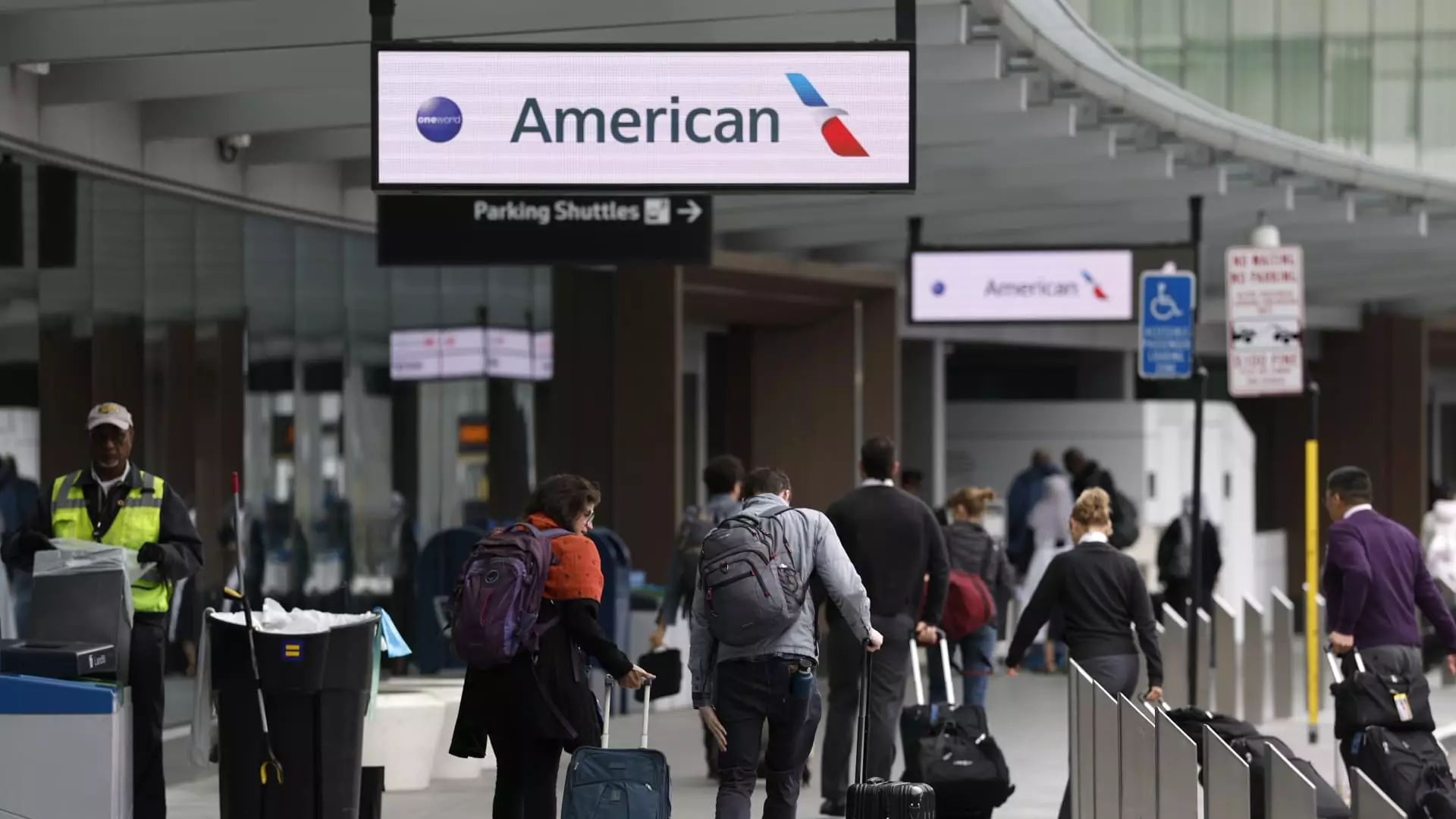The airline sector, long considered a bellwether of consumer confidence and economic vitality, appears to be inching toward a precarious cliff. Recent statements from major airline CEOs have drawn alarming attention towards the potential for an industry downturn, signaling that passenger enthusiasm for domestic travel is less robust than previously anticipated. This signals more than just fluctuating market conditions; it underscores a broader sentiment of apprehension permeating the consumer psyche. American Airlines CEO Robert Isom encapsulated this unease during a recent earnings call, emphasizing that uncertainty is the arch-nemesis of consumer spending, particularly when it comes to luxury expenditures like travel.
This volatility in air travel could stem from myriad factors: the aftershocks of wild tariff policies, economic predictions gone awry, and a general state of unpredictability gripping the nation. Such financial instability hardly encourages individuals to commit their hard-earned dollars to vacations that once brought joy and solace. A proclivity for spending is being replaced with hesitation, causing a ripple effect throughout the entire industry.
Falling Airfare: A Double-Edged Sword
One of the more disturbing revelations is the significant decline in airfare, dropping by an astounding 5.3% compared to last year. While lower prices might initially sound promising, they often signify an overabundance of supply that airlines are struggling to manage. Just as businesses should be planning for stability and growth, they’re confronted by the unpleasant reality of excessive seating capacity—an economic headache that can chase profits out the window.
The airlines have responded with a mixed bag of strategies, including scaling back their capacity growth plans and withdrawing previously optimistic financial projections for 2025. Delta, Southwest, and American Airlines’ lack of clarity regarding future earnings should raise red flags for both investors and travelers alike. The ability to pivot and adapt is critical in a rapidly changing environment, but the sheer scale of these cutbacks hints at a more damning reality: the industry may be in deeper trouble than anyone is prepared to admit.
The Impact of Corporate Travel
Corporate travel has historically been a bread-and-butter revenue stream for major airlines, primarily due to travelers’ lower price sensitivity and propensity to book last-minute—typically at much higher fares. The stagnation of business travel growth is therefore a significant cause for concern. What began as a promising 10% year-on-year increase has drastically flattened, pointing toward a larger economic malaise that affects corporate confidence in spending. The fallout from government cutbacks, economic uncertainty, and rising global tensions can only serve to exacerbate this trend, pushing corporate travel further down the priority list.
Melius Research analyst Conor Cunningham aptly noted that whenever uncertainty surfaces, corporate travel gets clipped first. The ramifications of this shift can be devastating, reducing airlines’ ability to operate profitably. Executives at airlines, such as those at Delta, may attempt to characterize corporate travel’s performance as relatively stable, yet one cannot ignore the tangible imperfections lurking beneath the surface.
Global Travel and Regional Disparities
While it’s easy to get lost in the domestic turmoil, it’s worth noting that international travel remains a bright spot—at least for now. U.S.-based consumers are still heading overseas in significant numbers. This divergence indicates that, while domestic markets are floundering, the appetite for global exploration persists. However, lingering uncertainties loom like shadows over that sector as well. Fluctuating currencies and geopolitical tensions could rapidly dampen that enthusiasm.
Airlines must grapple with these dual realities: a dwindling domestic demand coupled with a relatively stable international market. How they manage these contrasting dynamics will ultimately dictate their financial health moving forward.
A Call for Adaptive Leadership
In light of these unsettling signs, the leadership within the airline industry must engage in adaptive management strategies. Instead of relying on historical trends, they should foster an environment that embraces agility. Stakeholders and decision-makers must critically assess not only their financial outlook but also the socio-economic factors driving consumer behaviors.
While hope remains that a return to stability will ultimately restore consumer confidence, it’s vital for airline executives to confront the reality of their current situation. The lingering uncertainty can no longer simply be brushed aside—it demands proactive engagement and innovative solutions to navigate through potentially stormy seas. Only time will tell whether the airline industry can withstand this brewing crisis, but one thing is clear: complacency is no longer an option.

Leave a Reply